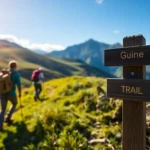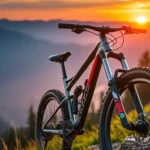Introduction to Trekking: Understanding the Basics
Embarking on a trek is more than just hiking a trail; it is an immersive experience that combines adventure, physical endurance, and a profound connection with nature. Whether you’re a seasoned outdoor enthusiast or a curious beginner, understanding the fundamentals of trekking sets the stage for a successful and enriching journey. As the popularity of outdoor exploration continues to surge globally, the term Trek has become synonymous with the pursuit of discovering remote landscapes, braving challenging terrains, and embracing the thrill of adventure. This comprehensive guide aims to demystify the concept of trekking, explore its history and evolution, and equip you with essential knowledge to plan your next expedition confidently.
What is Trekking? Definitions and Contexts
At its core, trekking refers to long-distance walking that often spans multiple days and involves navigating diverse terrains. Unlike casual hiking, trekking typically requires careful planning, specialized gear, and physical stamina to endure extended journeys through rugged environments. According to Merriam-Webster, a trek is “a trip or movement especially when involving difficulties or complex organization,” highlighting its adventurous and sometimes arduous nature.
In different contexts, the term “trek” can also imply organized migrations or journeys, such as those undertaken historically across difficult terrains or by groups seeking new settlements. The term’s origins trace back to South Africa, where it described organized migrations by ox wagons, symbolizing resilience and exploration. In contemporary usage, it has broadened to encompass activities like mountain trekking, jungle expeditions, desert traverses, and even space-themed adventures depicted in science fiction such as Star Trek.
The informal slang usage refers to a long, tiring walk — “a trek” — emphasizing its challenging aspect. For outdoor lovers, the appeal lies in pushing physical limits, experiencing untouched wilderness, and discovering hidden corners of the world that are often inaccessible by ordinary means.
History and Evolution of Trekking as a Sport and Hobby
The history of trekking dates back thousands of years, closely intertwined with human survival, exploration, and cultural exchange. Ancient civilizations, such as the Silk Road traders or Egyptians navigating the Nile, engaged in long journeys that demanded resilience and adaptation. Over centuries, these routes transformed from necessity-driven paths into pursuits of adventure and exploration.
The modern concept of trekking as a recreational activity gained momentum in the mid-20th century, driven by increased urbanization, global travel, and a heightened appreciation for outdoor pursuits. Pioneers like Sir Edmund Hillary, renowned for scaling Mount Everest, also promoted high-altitude trekking and exploration, inspiring countless others to venture into challenging terrains.
The rise of organized trekking companies and adventure tourism during the 1960s and 70s further democratized access to remote wilderness. Today, trekking has evolved into a thriving industry with specialized routes—from the towering Himalayan passes of Nepal to the dense rainforests of Central America—catering to all skill levels. Innovations in gear, safety protocols, and environmental awareness continue to shape the movement, emphasizing responsible exploration and sustainability.
Different Types of Treks: Mountain, Jungle, Desert
Treks are highly diverse, each offering unique challenges and unforgettable experiences. Understanding these categories helps adventurers select routes aligned with their interests, fitness levels, and safety considerations.
Mountain Treks
Mountain treks involve scaling high-altitude terrains, often with breathtaking panoramic views. Regions like the Himalayas, Andes, and the Rockies host renowned mountain treks such as the Annapurna Circuit or the Inca Trail. These journeys require acclimatization to prevent altitude sickness, specialized gear like crampons and high-altitude clothing, and solid physical preparation. Mountain treks often combine technical skills with endurance, making them suitable for experienced trekkers.
Jungle Treks
Jungle treks take explorers into lush, dense rainforests teeming with biodiversity. Such journeys often involve navigating uneven terrain, crossing rivers, and encountering rich flora and fauna. Popular destinations include the Amazon Basin or the Congo rainforest. Safety precautions include insect protection, knowledge of local wildlife, and sometimes guides familiar with the terrain. Jungle treks foster close encounters with nature and often include expert-led educational experiences about ecosystem conservation.
Desert Treks
Desert treks traverse arid, often harsh environments with extreme temperature variations between day and night. The Sahara Desert or the Arabian Peninsula offer renowned routes. Proper planning involves managing water supply, navigation skills, and understanding the ecological and cultural significance of the landscape. Desert treks can be both physically demanding due to heat and mentally challenging because of vast solitude and navigation complexities.
Planning Your Trek: Preparation and Strategies
Selecting the Right Trekking Route
Choosing an appropriate route is foundational to a successful trekking experience. Consider factors such as the trek’s difficulty level, distance, estimated duration, weather conditions, and your skill level. Start by researching reputable trekking guides, online forums, and travel agencies specializing in adventure trips. For beginners, shorter, well-marked trails with moderate terrain like the Inca Trail or Appalachian Trail are ideal. Experienced trekkers might seek remote or technically challenging routes like the K2 Base Camp Trek or the Karakoram Highway.
Evaluate your physical fitness, available time, and safety requirements. For instance, mountain treks might demand high-altitude acclimatization, while jungle expeditions could require knowledge of survival skills and biodiversity awareness. Prepare a checklist of your personal interests—be it cultural immersion, wildlife viewing, or intense physical challenge—to better align your choice.
Gear and Clothing Essentials for Trekking Success
Proper equipment is crucial to safeguard against environmental challenges and enhance comfort. Essential gear includes high-quality trekking shoes designed for specific terrains, moisture-wicking clothing adaptable to temperature shifts, and reliable backpacks with adequate capacity. Additional items such as trekking poles, hydration systems, and weather-resistant gear significantly improve safety and efficiency.
Specialized gear becomes critical when trekking in extreme conditions. For high-altitude peaks, consider insulated sleeping bags, oxygen masks, and skin protection. In jungles, insect repellents, waterproof clothing, and machetes might be necessary. Remember, lightweight and durable gear reduces fatigue and improves mobility.
Physical and Mental Preparation Tips
Successful trekking requires dedicated physical training focused on endurance, strength, and flexibility. Incorporate cardio exercises like running, cycling, and stair climbing to build stamina. Strengthening core muscles and legs improves balance and reduces injury risk.
Equally important is mental preparedness. Techniques such as visualization, meditation, and setting realistic goals help develop resilience against stress and fatigue during demanding segments. Familiarize yourself with the route, weather patterns, and emergency procedures through simulations or shorter practice hikes. Developing a positive mindset enhances your overall experience and ensures you remain motivated in challenging moments.
Choosing the Best Trekking Equipment and Gear
High-Quality Trekking Shoes and Footwear
Your boots are your foundation in trekking. Well-fitted shoes tailored to terrain—mountain, jungle, or desert—are vital. Features to look for include waterproofing, good ankle support, slip-resistant soles, and breathable materials. Investing in reputable brands ensures durability and comfort, reducing the risk of blisters and injuries. Break in new shoes before long treks to prevent blisters and discomfort.
Backpacks, Navigation, and Safety Tools
A durable backpack with adjustable straps and proper weight distribution enhances mobility. It should have enough capacity for food, water, clothing, and essential tools. Carry navigation aids such as GPS devices, compasses, and maps, and familiarize yourself with their use. Safety kit essentials include first aid supplies, multi-tools, headlamps, and whistles. For remote or technical treks, satellite phones or emergency locators provide added security.
Specialized Trekking Gear for Extreme Conditions
Extreme environments demand specialized equipment: insulated clothing and thermal layers for cold, sun protection and hydration systems for hot conditions, and climbing gear for technical ascents. Environmental protection gear like biodegradable wipes, eco-friendly insect repellents, and water purification systems support sustainability and safety.
Navigating Challenges During a Trek
Weather and Terrain Management
Weather unpredictability can turn treacherous quickly. Always check forecasts before departure and be prepared for sudden changes. Use appropriate gear—rain jackets, UV protective clothing, and trekking poles—to adapt to terrain and weather conditions. Maintain flexibility in your plans; sometimes weather necessitates route adjustments for safety.
Dealing with Fatigue and Altitude Sickness
Fatigue can impair judgment and physical ability. To combat this, pace yourself, hydrate regularly, and prioritize rest. Recognizing symptoms of altitude sickness, such as headaches, dizziness, or nausea, is critical. Ascend gradually to allow acclimatization, and seek medical attention if symptoms worsen. Proper nutrition and sufficient sleep further support resilience.
Wildlife and Environmental Safety Precautions
Encounters with wildlife require caution. Maintain a respectful distance, avoid feeding animals, and store food securely. Carrying deterrents and knowing local species’ behaviors can prevent dangerous interactions. Adherence to leave-no-trace principles preserves the environment, prevents Trail erosion, and protects fragile ecosystems.
Capturing and Sharing Your Trekking Experience
Photography Tips for Adventurers
Engaging photos capture the essence of your adventure. Use a lightweight camera or smartphone with high-resolution capabilities. Focus on composition—foreground interest, leading lines, and natural framing enhance your shots. Early morning and late afternoon provide optimal lighting; don’t forget to include wide-angle shots of landscapes and close-ups of flora and fauna.
Creating Engaging Trek Logs and Blogs
Document your journey through detailed logs or captivating blogs. Share practical tips, personal stories, cultural insights, and environmental observations. Incorporate maps, photos, and videos to enrich your narrative. Platforms like WordPress, Medium, or travel-specific sites can broaden your audience and connect you with fellow trekkers.
Community and Social Media Sharing Guidelines
Building a community around your trekking experiences involves respectful sharing. Use hashtags appropriately, tag relevant accounts, and promote environmental awareness. Protect sensitive locations by avoiding overtly detailed descriptions of fragile ecosystems. Engage with your audience through comments and messages to foster a supportive network of outdoor enthusiasts.









